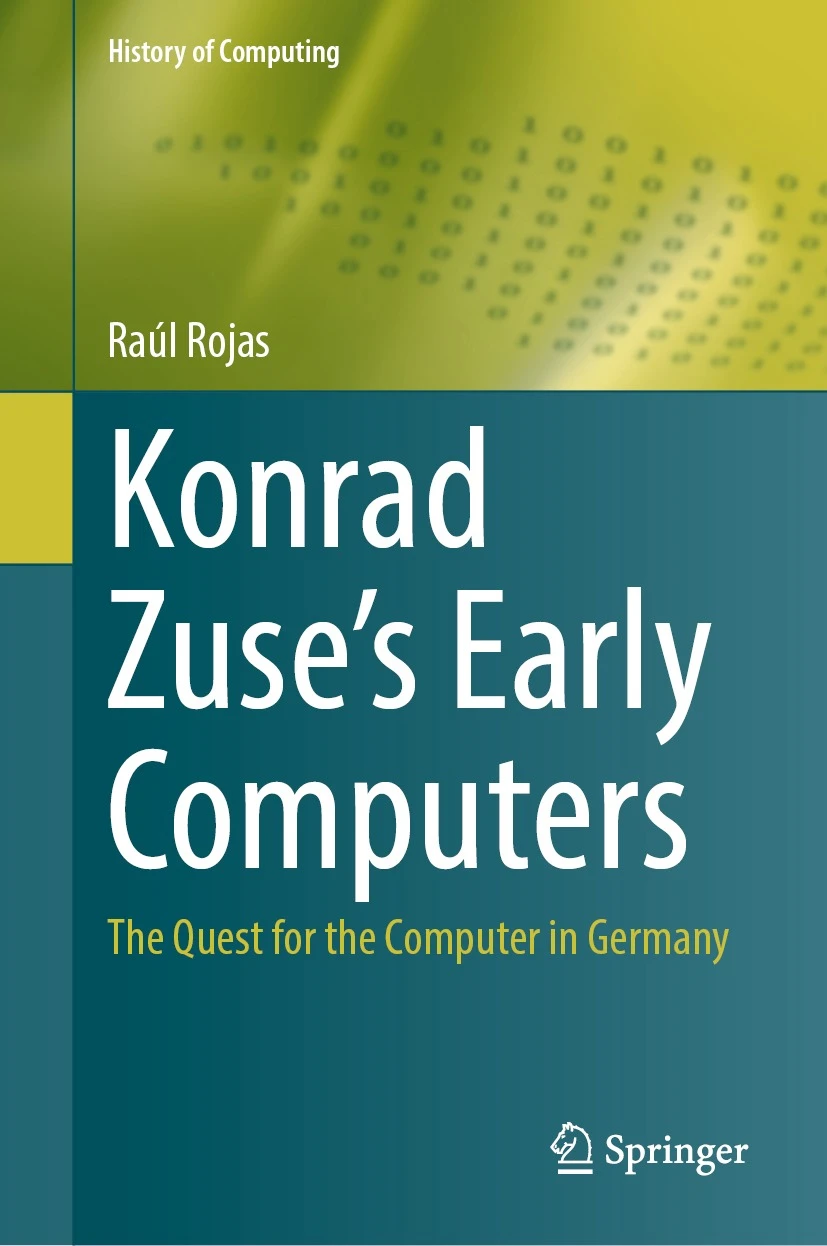Konrad Zuse's Early Computers (Review)
Although historians are usually pushed to decide questions of “who was first,” the question of impact is more interesting. Konrad Zuse has a claim to the first computer, the first high-level computer language, and the first European commercial computer sale, but his relative isolation working in Germany in the 30s and 40s limited his visibility and impact. It wasn’t until the 1970s for his innovations to become more widely known. Raúl Rojas has long contributed to the historical appreciation of Zuse and the remarkable modern nature of his machines. This volume collects and makes available in English many of his previous articles on the subject.

Raúl Rojas. Konrad Zuse’s Early Computers: The Quest for the Computer in Germany. Springer 2023. Publisher Link
The book is primarily a technical history, discussing how each of Zuse’s early computers (Z1, Z2, Z3, and Z4) were designed and implemented, including the post-war effort to add conditional jumps to the Z4. The author also provides one of the clearest explanations of Plankalkül, Zuse’s high-level, symbolic programming language with an unusual two-dimensional syntax (likely inspired by engineering spreadsheet computation forms). The author also covers the S1 and S2, special-purpose computing machines for finding control corrections caused by aircraft wing manufacturing defects. Zuse’s efforts towards chess playing software are explained. Finally, the book contains two chapters providing historical context on the world-wide efforts to build computers and insight into the politics of Zuse and his close associates.
Rojas' explanations are very clear, improved by a large number of illustrations and diagrams. The tone is measured and he provides evidence for his claims, and the limits of those claims. For instance, the Z4, built between 1942 and 1945, lacked any instructions for jumps, conditional or not. Zuse was aware of the limitation (as noted in his journals of the time), but since the Z4 only had 64 words of memory, he felt it was an acceptable limitation. After the war, the ETH university leased the machine in 1950, but with the proviso that Zuse add conditional jumping. Using only microinstructions, he was able to add test operations (e.g. x equals zero, x is greater than zero) and a subroutine jump instruction. Although the jump was still limited, limiting programs to a single loop, this was sufficient for the use cases of the day. Rojas discusses how this limitation factors into the debate over the first computer, both practically, comparatively (comparing it to the ENIAC and the IBM/Harvard Mark I), and theoretically (how this limitation can be ignored in terms of Turing’s infinite tape).
(If you are interested in how the Z4 was used at ETH, I recommend reading the chapter “Computer Development in Switzerland” in Herbert Bruderer’s Milestones in Analog and Digital Computing, Vol 2.)
In terms of the book’s goal — describe the progression of Zuse’s thinking and the development of his computers through the specification of the Plankalkül language — it succeeds in its purpose. We learn little about Zuse himself, but that is not the point of the book. Due to the after-effects of the war, Zuse was penniless and lost many years before he could restart his efforts and build new computers. In the mean-time, the U.S. and British efforts quickly iterated on new designs and established new markets. While Zuse was not unknown — he met Turing and Plankalkül was referenced by the ALGOL committee — his impact was limited, perhaps partially due to his patents being disregarded by the German government and his doctorate thesis not being published.
However, since the matter of impact is all post-war, I think the book ended too early. Zuse’s story is intertwined with post-war politics and geography, the influence of patents, and the beginning of the commercial computer industry. None of these are technical topics or within the author’s expression of scope, but by not including them, the reader needs to read another volume to get the full story.
Also, the book could be improved by the addition of some color plates as some of the photos and diagrams have more detail than is comfortable in grey-scale. Most of the diagrams are high-quality and easy to read.
Recommended. At $38 for the hardbound edition, this is a good value for an academic work.